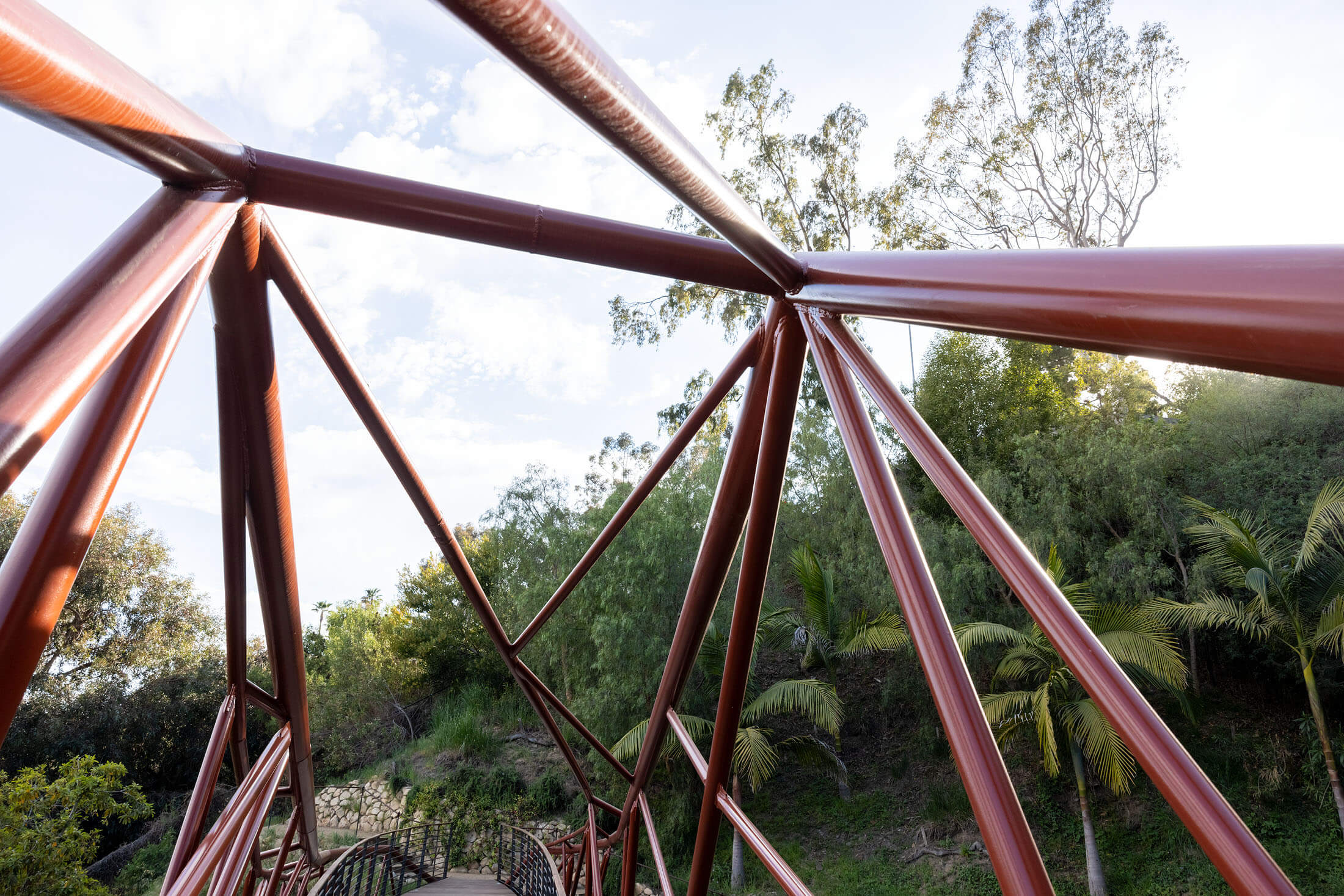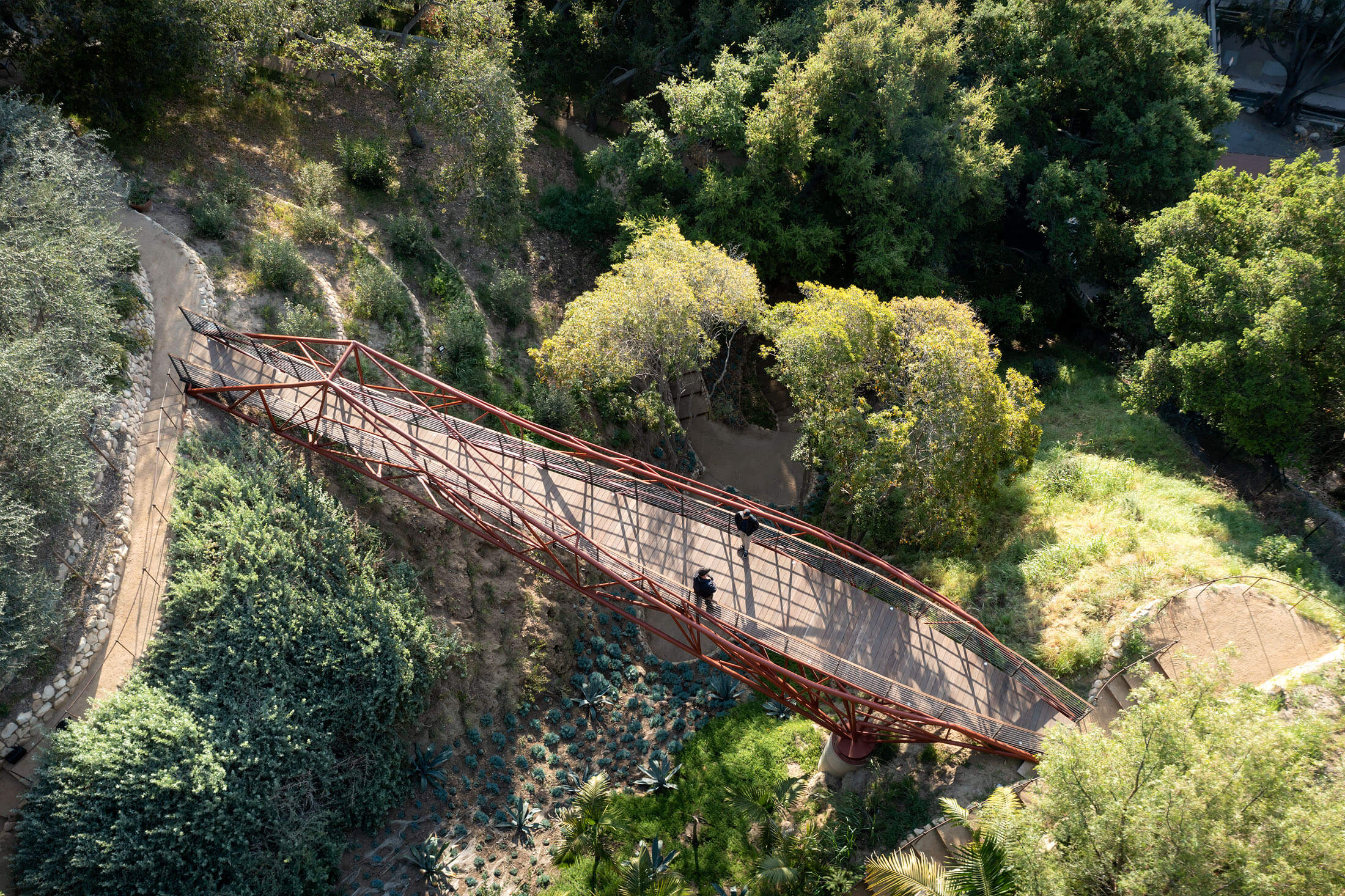Over the last few years, the Los Angeles area has seen a great influx of infrastructural and placemaking projects that emphasize the status of the pedestrian within the city, ranging from Frank Gehry’s reenvisioning of the L.A. River to the ongoing construction of Destination Crenshaw. The Arroyo Bridge, which wrapped up construction at the beginning of the pandemic but was only recently photographed, joins that trend but with a technological spin—it was partially built by robots.

The project dates back to 2014 and was developed by students enrolled in a design-build studio at the USC School of Architecture. It is an initiative sponsored by the Madworkshop, a foundation created by Mary Martin and architect David Martin of AC Martin, to support academic partnerships and emerging designers. The bridge spans an 80-foot canyon and was built from over 600 unique parts joined by part-to-part connections. In a statement, the team noted that the tubular silhouette was intended to resemble “the vascular architecture of leaves and layered branching system of trees.”

Readily available parametric software was the principal tool used to develop the optimal component breakouts of the bridge. As reported by Fast Company, the facilities at USC were not large enough to accommodate either the scale or complexity of the project, so the students set up shop for several months at the Autodesk Technology Center in Boston. There, with a script developed in collaboration with Autodesk, the students guided a six-axis robotic arm to fabricate and weld hundreds of steel parts. In total, the bridge is composed of approximately 18,000 pounds of steel, and, according to the design team, the precision of robotic fabrication reduced wastage to a relatively modest 1,000 pounds (all of which was recycled). The partially assembled components were then shipped across the country and installed over the course of two weeks.
“The Arroyo Bridge demystifies the use of nuanced tools for architectural design and fabrication, but it also pays tribute to the craftsmanship of traditional building methods and builders,” said the design team. “This human-robot interaction is a novel approach to execute unique forms that would otherwise be impossible. Collaborative robotics presents an encouraging picture of a future workforce that is efficient, sustainable and socially minded.”











